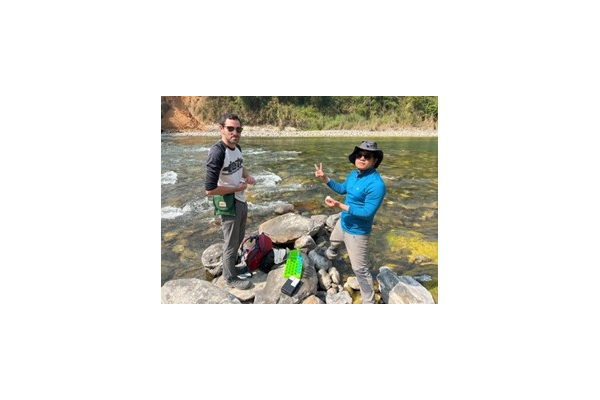INVESTIGATING OPHIOLITE WEATHERING VIA LITHIUM ISOTOPES IN THE INDO-BURMA RANGE OF NORTHEAST INDIA
The weathering of silicate minerals acts as a driver for cooling Earth’s climate on million-year timescales. Some silicate bedrock, particularly ultramafics, are more susceptible to enhanced weathering than other lithologies. Lithium isotopes (δ7Li) can act as a proxy to help track weathering processes due to the fractionation of Li during secondary clay mineral formation. Here I’ll present my analysis of data collected from tributaries that source the Nagaland-Manipur Ophiolite Complexes, an ultramafic sequence in northeastern India. These drainages ultimately flow into the Irrawaddy River in Myanmar, a major river in SE Asia and a system responsible for a significant amount of Himalayan sediment flux. The goal is to test the hypothesis that the weathering of ultramafic terrains generated by arc-continent collisions can drive rapid atmospheric carbon drawdown. Major cations, anions, trace elements, δ7Li, and clay mineralogical compositions were measured from river water, bedload, and suspended sediment to gain insight into the silicate weathering processes of the region. Our results show streams and rivers in this region contain δ7Li values that range from 20.6 to 31.2‰, with the ophiolitic-sourced tributaries being heavier than the global riverine average of ~23‰. This indicates that rivers draining ultramafic lithologies in warm humid climates are experiencing higher degrees of weathering intensity than other drainages comprised of more felsic lithologies. This data highlights new pathways toward understanding silicate weathering as it relates to atmospheric CO2 drawdown. Future work will focus on comparing these results to other proxies to better understand the strengths and weaknesses of isotopes as weathering proxies as well as acting as a way to confirm our findings.
Additional information: Mr. Giancarlo DEFRANCESCO, gdefran@connect.hku.hk










